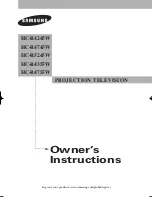
14.6.2
Function block
The Event recorder has no function block of it’s own.
14.6.3
Signals
14.6.3.1
Input signals
The Event recorder function logs the same binary input signals as the Disturbance report
function.
14.6.4
Operation principle
When one of the trig conditions for the disturbance report is activated, the event recorder
logs every status change in the 96 selected binary signals. The events can be generated by
both internal logical signals and binary input channels. The internal signals are time-
tagged in the main processor module, while the binary input channels are time-tagged
directly in each I/O module. The events are collected during the total recording time (pre-,
post-fault and limit time), and are stored in the disturbance report flash memory at the end
of each recording.
In case of overlapping recordings, due to
PostRetrig = Enabled
and a new trig signal
appears during post-fault time, events will be saved in both recording files.
The name of the binary input signal that appears in the event recording is the user-defined
name assigned when configuring the IED. The same name is used in the disturbance
recorder function , indications and event recorder function.
The event record is stored as a part of the disturbance report information and managed via
the local HMI or PCM600.
Events can not be read from the IED if more than one user is accessing the
IED simultaneously.
1MRK 506 335-UUS A
Section 14
Monitoring
647
Technical manual
Содержание REL650 series
Страница 1: ...Relion 650 series Line distance protection REL650 ANSI Technical manual ...
Страница 2: ......
Страница 42: ...36 ...
Страница 48: ...42 ...
Страница 58: ...52 ...
Страница 68: ...62 ...
Страница 74: ...68 ...
Страница 194: ...188 ...
Страница 534: ...528 ...
Страница 580: ...574 ...
Страница 722: ...716 ...
Страница 792: ...786 ...
Страница 855: ...849 ...
















































